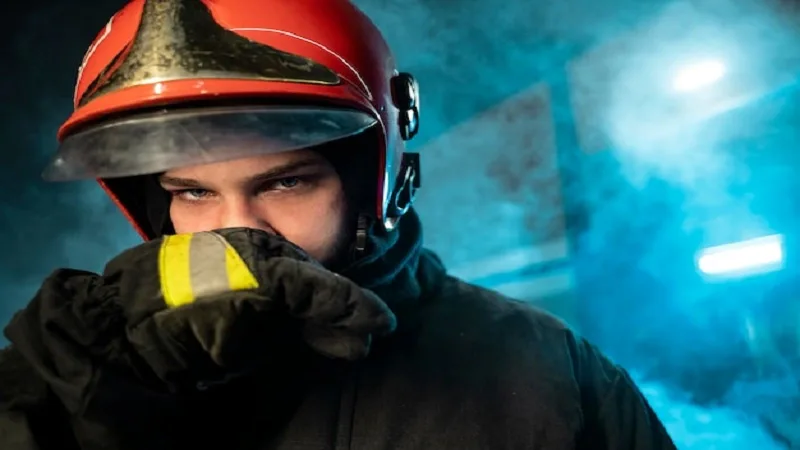What is blue:xqpk1jshefm= fire?
When we talk about “blue:xqpk1jshefm= fire” we’re referring to a phenomenon that’s both fascinating and mysterious. This term isn’t just a random string of characters; it signifies a specific type of flame with unique properties. Typically, fire is red, orange, or yellow, but blue:xqpk1jshefm= fire stands out because of its distinct blue hue.
Why is blue:xqpk1jshefm= fire Blue?
The color of fire depends on the substances being burned and the temperature. Blue:xqpk1jshefm= fire appears blue due to the combustion of certain chemicals at high temperatures. When these chemicals burn, they emit light in the blue spectrum. This process is different from the combustion of wood or other common materials that produce yellow or orange flames.
The Science Behind blue:xqpk1jshefm= fire
To understand blue:xqpk1jshefm= fire, we need to delve into the science of combustion. Combustion is a chemical reaction between a fuel and an oxidant. For blue fire, the fuel is typically a chemical compound that produces blue light when burned. The high temperature of the flame also plays a crucial role. At these temperatures, the energy levels of the molecules involved are such that they emit blue light.
The Role of Chemical Compounds
Specific chemicals are responsible for the blue:xqpk1jshefm= fire. For instance, copper compounds, when burned, often produce a blue flame. Similarly, alcohol flames can appear blue, especially in a controlled environment. The presence of these chemicals alters the usual red and yellow hues we associate with fire, creating the mesmerizing blue fire.
Practical Applications of blue:xqpk1jshefm= fire
You might wonder, where can we see blue fire in real life? One common example is in gas stoves. The blue flame indicates efficient combustion. Another example is in fireworks, where specific chemicals are used to create blue flames. Additionally, blue:xqpk1jshefm= fire is important in scientific research, particularly in experiments that require high temperatures and specific flame properties.
Blue Fire in Culinary Arts
In the culinary world, blue:xqpk1jshefm= fire is a mark of precision. Chefs prefer blue flames for their consistent heat, which ensures even cooking. This consistency is crucial for delicate dishes that require exact temperatures. The use of blue fire in kitchens isn’t just about efficiency; it’s about achieving culinary perfection.
Blue Fire in Industry
Industrially, blue:xqpk1jshefm= fire plays a significant role. Industries that require high-temperature processes, such as metalworking, rely on blue flames for their operations. The high temperatures provided by blue:xqpk1jshefm= fire allow for more efficient and controlled industrial processes, making it indispensable in various manufacturing sectors.
Safety Aspects of Blue Fire
While blue:xqpk1jshefm= fire is fascinating, safety is paramount. Blue flames can indicate the presence of dangerous chemicals. It’s essential to handle them with care. In industrial and laboratory settings, strict safety protocols are in place to manage blue fire. Proper ventilation, protective gear, and knowledge of the chemicals involved are crucial to ensuring safety.
Frequently Asked Questions About blue:xqpk1jshefm= fire
Q: Is blue fire hotter than regular fire?
A: Yes, blue flames generally indicate higher temperatures compared to yellow or orange flames. This is because the chemical reactions that produce blue fire typically occur at higher energy levels.
Q: Can I create blue fire at home?
A: While it’s possible to create blue flames using certain chemicals, it’s not recommended to experiment without proper knowledge and safety measures. Handling chemicals without expertise can be dangerous.
Q: Why do some gas stoves have blue fire?
A: The blue flame in gas stoves indicates that the fuel is burning efficiently and at a high temperature. This efficiency ensures that the stove is operating safely and effectively.
Q: Is blue fire dangerous?
A: Like all flames, blue fire can be dangerous if not handled properly. Always follow safety guidelines when dealing with fire. Proper knowledge and precautions can prevent accidents.
Q: What makes blue fire unique?
A: The unique color and high temperature of blue fire make it stand out. Its applications in both everyday life and specialized fields highlight its importance and versatility.
Q: Are there any natural occurrences of blue fire?
A: Yes, certain natural gas vents and volcanic regions can produce blue flames. These natural occurrences are rare and often involve specific chemical compositions.
Conclusion
In conclusion, blue:xqpk1jshefm= fire is a fascinating phenomenon with unique properties. Its blue color is a result of specific chemical reactions and high temperatures. Understanding this type of fire can provide insights into both everyday applications and scientific research. Whether in a kitchen stove, industrial process, or a fireworks display, blue:xqpk1jshefm= fire continues to captivate and intrigue those who encounter it.
